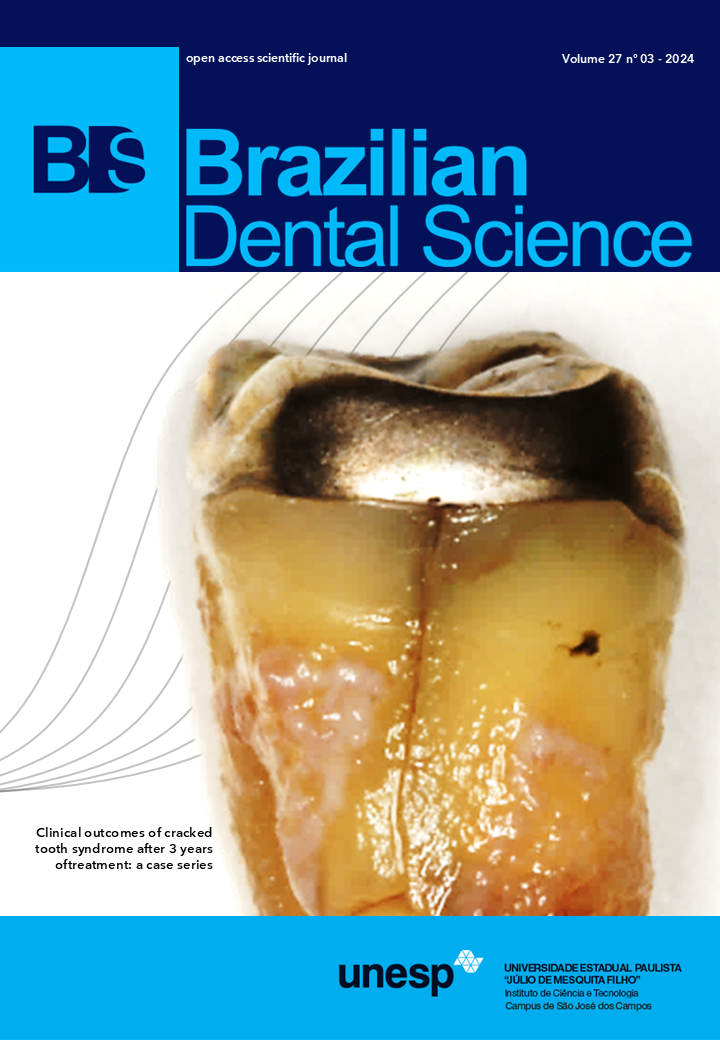Texture analysis as a marker for identifying joint changes in temporomandibular disorders on magnetic resonance imaging
DOI:
https://doi.org/10.4322/bds.2024.e4312Abstract
Objective: The present investigation aimed to characterize Texture Analysis (TA) parameters of the condylar
medullary bone and the superior aspect of the lateral pterygoid muscle (LPM) on Magnetic Resonance Imaging
(MRI) for the identification of potential changes in individuals with temporomandibular disorder (TMD).
Material and Methods: A total of 40 MRI scans was retrospectively selected, consisting of 20 from patients
without temporomandibular joint (TMJ) changes (control group) and 20 from patients diagnosed with TMD
(TMD group). All MRI scans adhered to a consistent protocol, utilizing an 8.0 cm diameter bilateral surface coil
to capture latero-medial parasagittal images with T2-weighted and Proton Density-weighted (PD), both with
the mouth closed and at maximum mouth opening. TA was performed using the MaZda 4.20 software (Institute
of Electronics, Technical University of Lodz, Poland). The regions of interest (ROI) were standardized for all
evaluated images, and texture parameters were calculated through the gray-level co-occurrence matrix method.
TA results underwent comparison using the Mann-Whitney test. Results: There was a statistically significant
difference in the Correlation and Moment of Inverse Difference parameters between control and TMD groups,
notably evident in PD-weighted images for the region of the condylar medullary bone and the LPM, respectively
(p<0.05). Conclusion: Thus, the TA method exhibits promising potential to provide valuable information,
enhancing the accuracy of TMD diagnosis and classification.
KEYWORDS
Dentistry; Diagnostic imaging; Magnetic resonance imaging; Radiomics; Temporomandibular joint dysfunction
syndrome
Downloads
Published
How to Cite
Issue
Section
License
Brazilian Dental Science uses the Creative Commons (CC-BY 4.0) license, thus preserving the integrity of articles in an open access environment. The journal allows the author to retain publishing rights without restrictions.
=================




























